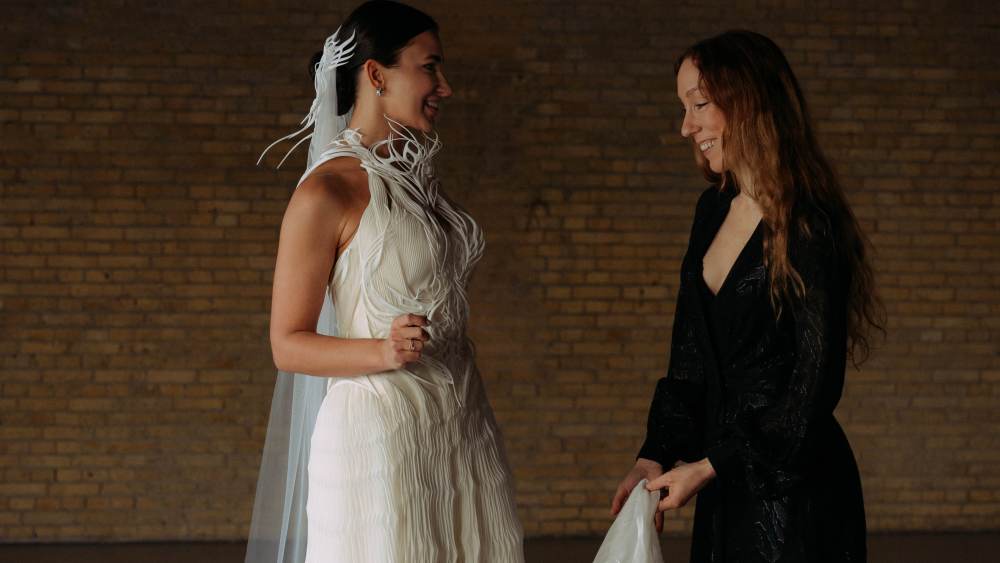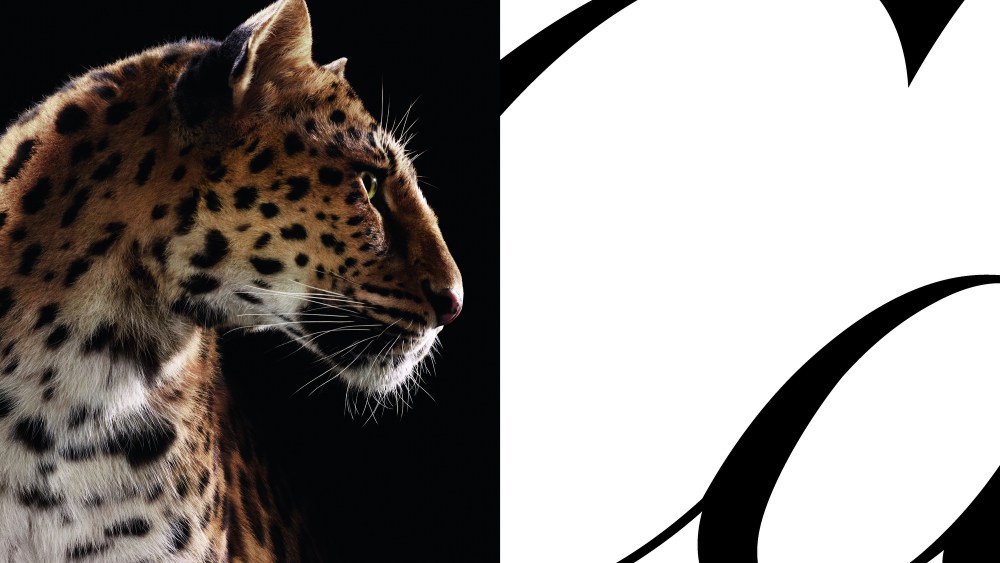How many wedding dresses have a file size?
To our knowledge, only one, and Brazilian tax lawyer Mariana Pavani walked down the aisle on May 11 in the high-tech creation by Dutch couturier Iris van Herpen, a pioneer in 3D-printed garments whose first such design from 2010, a stiff creation reminiscent of overlapping shells, was recently on display at the Musée des Arts Décoratifs in Paris.
By contrast, Pavani’s bridal gown has an otherworldly delicacy, the swarm of futuristic frost across the bodice and throat giving a solid appearance that belies its pliability and durability.
“There are no seams. You could not do this with a typical pattern,” said van Herpen, whose Amsterdam atelier logged 600 hours to realize the design, preceded by much tinkering with ZBrush, a digital sculpting software.
“This was really a dream project for me, because 3D-printed fashions are in museums, and on runways, but having it worn by someone on the most special day of her life, I think it’s really something else,” she said.
“I really wanted an outlier dress, something unique,” Pavani related over Zoom from her home in São Paulo about a week before the ceremony. “From the beginning, I was hoping that the dress would incorporate 3D printing in its design.”

The process started with a 3D bodyscan of Pavani, required several in-person fittings of the hand-pleated base dress, and then a meticulous marrying of the delicate fabric and the 3D-printed elements, which were done at a specialized facility in Paris.
The file size for the 3D design was 216.7 MB, and it took 41 hours to print it, according to van Herpen.
She noted there were several test runs for the 3D-printed elements, and for the intricate pleating, whose pattern had to match up with the bodice design. “So you have the sculptural elements, but also the fluidity, the movement. And that is dichotomy that I really love,” said the designer, who had a background in dance before becoming a couturier.
Despite all the high-tech elements and experimentation, the final result unleashed powerful human emotions.
“It was one of those moments where she started crying when she put on the dress, and it was so magical,” van Herpen said, sighing with delight and raising her eyes toward the heavens.
“It was hard to contain my tears,” Pavani confessed. “We had achieved everything I was hoping for… The final design makes me feel powerful and feminine, a very unique and singular look.”
Pavani also lauded van Herpen’s “amazing team” for making her feel “welcome and part of the creative process. There was also a lot of work to get the final design to fit and feel the right way on my body. They considered everything — the way that the dress fits me, the way the dress moves and feels, and even the length of the veil in relation to the chapel we’re getting married in.”
Pavani said her fiancé, composer and art collector Roberto Toscano, introduced her to van Herpen’s work, arranging for tickets to her fall 2022 fashion show in Paris.
“I just found it stunning: the movement of the dresses, the way the collection flowed, and Iris’ love of nature really spoke to me,” she recalled. “We began speaking to the team right away to see if a wedding dress could be created.”

Van Herpen described a strong complicity with Pavani, who shares her love of nature, art — and pushing boundaries.
“I wanted to bring femininity, but with a cutting-edge vibe, because she is someone that is not ordinary at all. She’s really not afraid to express herself,” the designer enthused about Pavani. “We both feel fashion is a form of art. And so she really dares to express herself and to embody that femininity, but also with the influences of new tech.”
Van Herpen, who melds traditional couture techniques like pleating, draping and beading with high-tech elements like silicon molding and laser-cutting, considers both central to her brand DNA.
She was dazzled by the capabilities of the Paris printer, which she discovered only a year ago. “The quality of the flexible material is so, so good,” she marveled about the nylon polymer known as PA 12. “She can sit in it, she can basically do anything in it without it becoming less flexible over time.”
Misconceptions about 3D-printing in fashion still abound, and many consider it technically out-of-bounds.
“It is a very complicated process. Yes, you have to become familiar in it, but once you get it, I don’t think it’s much more difficult than some of the more traditional ways of working,” van Herpen said.
As for lingering beliefs that 3D-printed fashions are unwearable, “that’s history, because with the materials and the flexibilities that you have today, it’s super comfortable.
“It is fully where I hoped it would be back then,” she said — “then” being in 2010 when she realized her first 3D-printed garment. She said it took scientists many years of innovation and “stress tests” to overcome “limitations on the durability of the flexibility.”
Indeed, Pavani’s dress also does not require any exceptional care or handling. “The cleaning is like any precious wedding look: You can’t put it in the washing machine, but for dry cleaning, it’s fine. And for storage, you can just put it on the hanger. It’s so lightweight,” van Herpen said.
In van Herpen’s view, 3D-printing “creates a lot of freedom” when she designs, explaining that the “look that you’re seeing on this bride is not something that we could make in any other way. The sculptural complexity of these files, there’s just no way that we could make that by hand. You could not do that via any type of pattern making.
“I also like the seamlessness and therefore also the smoothness, the cleanness of it is something that I really love,” she added. “I think a lot of people still feel a bit frightened by the process [of 3D-printing] because it’s different, but it gives you a lot of freedom once you own it.”

That said, “you have to keep your eyes open on what’s happening in different areas of the world because 3D printing is really global,” she said.
Given that her wedding dress is going where no dress has gone before, Pavani said she would never expect everyone to appreciate it as much as she does.
“Just like all art, there will be different opinions about the dress. I accept that,” she said. “But for me, the 3D-printed structure that attaches to the neck is highly symbolic. The shape of the neck element brings to mind the eyes of an owl, which in the Brazilian religion of Candomblé is usually associated with wisdom. Both spirituality and nature are areas I’m deeply interested in.”
In fact, Pavani considers the dress a work of art that she plans to display in her apartment.
“Both Roberto and I are very proud of having had Iris design my wedding dress,” she said. “It’s a masterpiece.”




